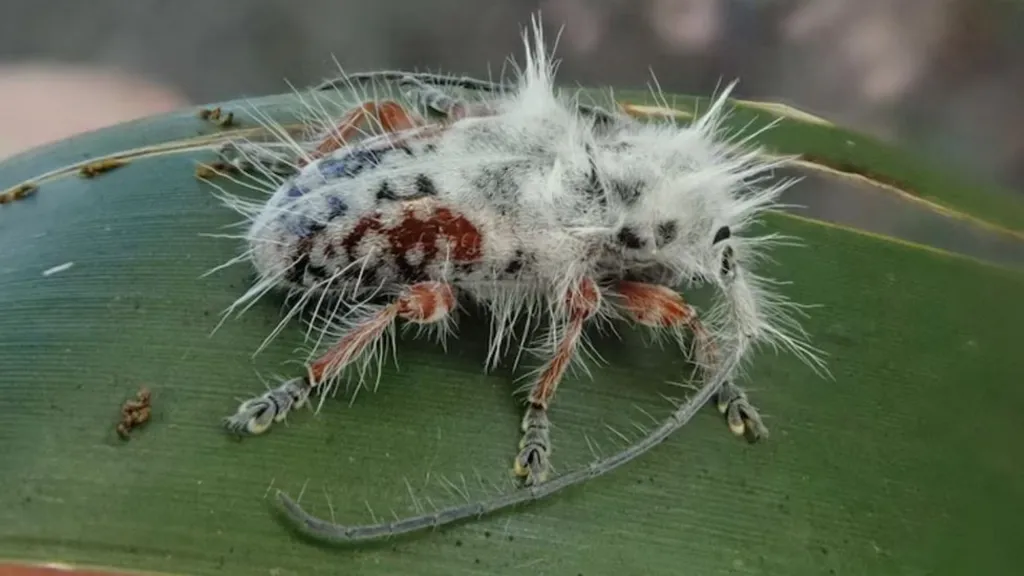(CTN News) — What has red, black, and hair all over it? A new species of bug discovered in Australia, nicknamed the “punk beetle” because of its shaggy white locks.
A Queensland researcher stumbled upon the fluffy specimen while camping and initially mistook it for bird excrement.
“It’s quite distinctive. “There aren’t many insects with that trait,” James Tweed told the BBC.
The national science organization CSIRO has since determined it is an altogether new species of longhorn beetle.
When Mr Tweed noticed a tiny white item on a leaf in the Gold Coast hinterland in December 2021, he didn’t think much of it.
But after doing a double take, the entomologist realized it was an insect unlike any he had ever seen.
“It’s about one centimeter long… and covered in long, fluffy white hairs,” he said.
“A lot of the hairs stand basically straight upright, and so it gives it a bit of a mohawk type look.”
Excited, he photographed and collected the bug for study.
After posting to a Facebook group for insect enthusiasts, which yielded no results, Mr Tweed, a PhD candidate at the University of Queensland, submitted the beetle to the CSIRO’s Australian National Insect Collection (ANIC).
“I worked with a couple of colleagues from the national insect collection, who literally wrote the book on these groups of beetles… they examined tens of thousands of specimens in museums all over Australia and the world, and they’ve never found it before.”
Scientists had previously discovered several insect species with spiky hairs, such as hairy caterpillars and a jet-black ant with a blazing orange mane, both from Queensland, but this bug was unique.
“I’m not aware of any [other insects] that have a hairdo like this one does.”
It is so unlike any other species that the ANIC proclaimed it a whole new genus of longhorn beetles, formally known as Excastra albopilosa – excastra meaning “from the camp” in Latin and albopilosa “white and hairy”.
The scientists aren’t sure why the beetle is furry, but they believe it developed to resemble an insect killed by a fungus to repel predators.
There are many unresolved questions until further information is discovered.”
However, Mr Tweed believes that recording this single beetle is a significant step forward for science.
“It’s hard for us to conserve species if we don’t even know that they exist.”
“It’s great to have this beetle getting so much attention and being a bit of an ambassador for insects and conservation.”






